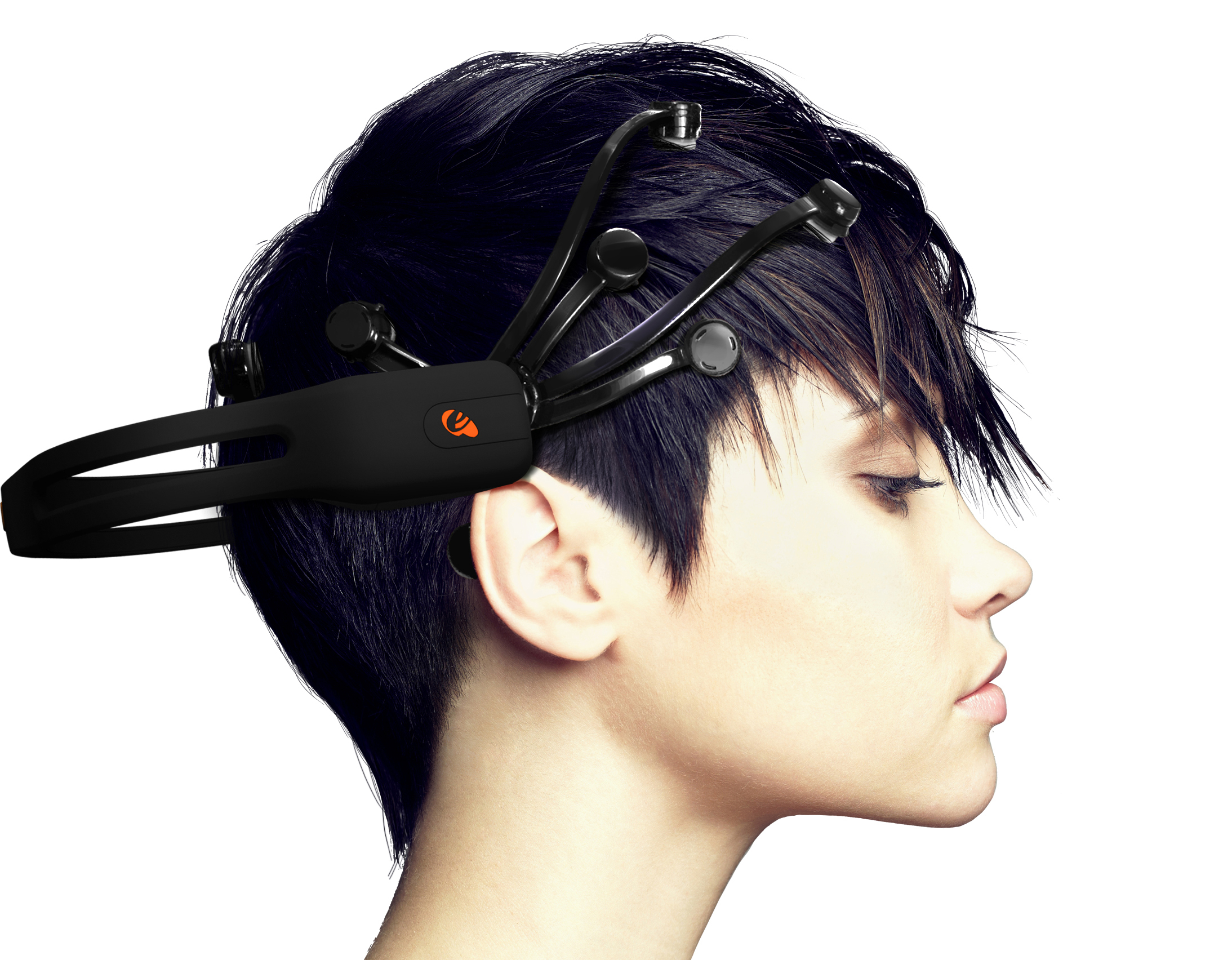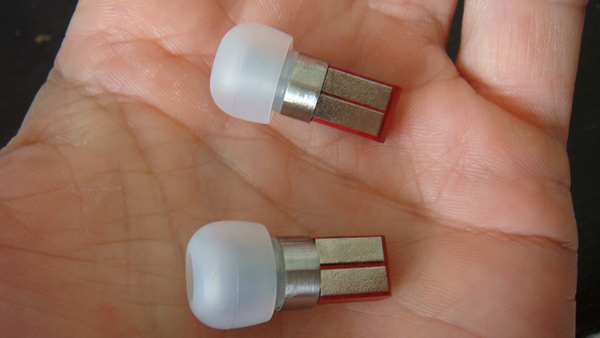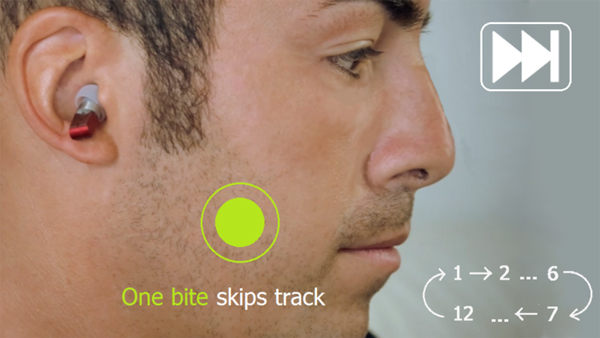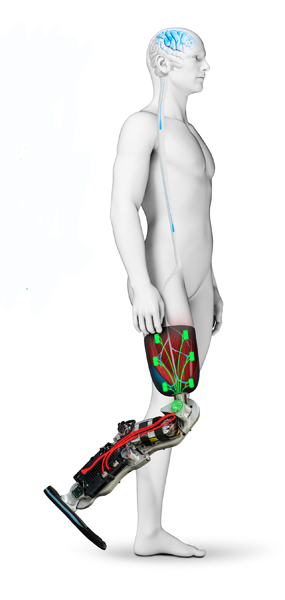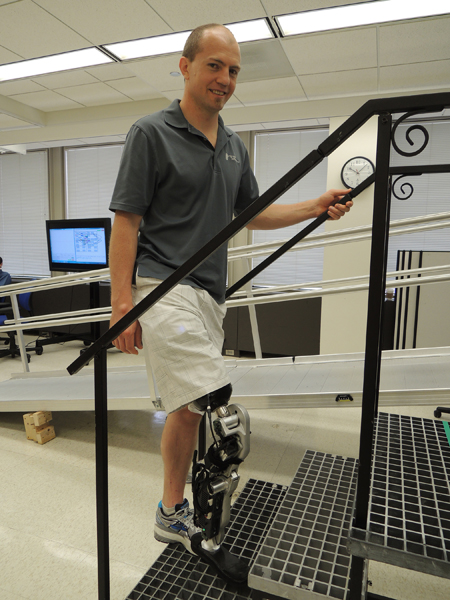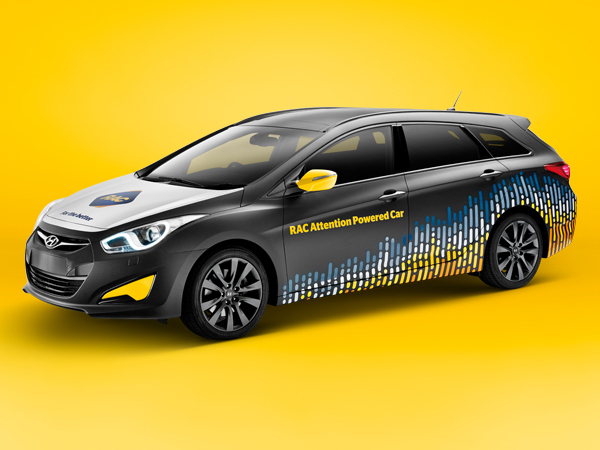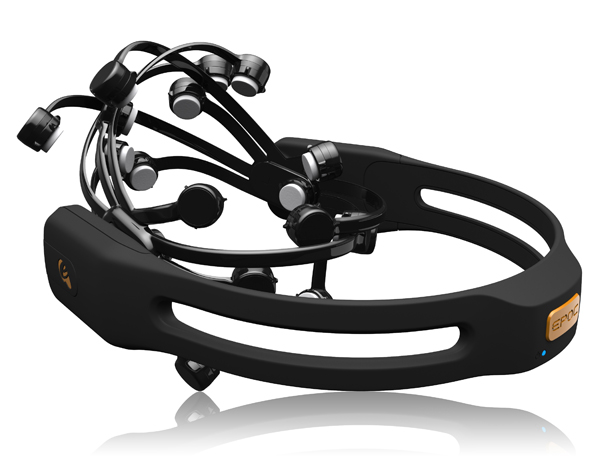No more buttons, levers, or dials. This week’s cutting-edge stories are all about how are bodies can control cutting-edge technology.
Split Music Player
Here we have a set of earbuds that are themselves the MP3 player. No cables, no box, no belt clip. You just turn them on, pop them into your ears, and listen. Too good to be true? There are some challenges, but inventor Marco Scandurra has the clever answers.
How do you play music when there are no buttons? You bite your teeth. The Split earbuds have little accelerometer sensors in them that can pick up the movements from your jaw. You bite once to change songs, twice to adjust the volume. Tapping the earbuds turns the controls on and off, so you won’t accidentally change tracks by talking or chewing thoughtfully.
You’d expect a wireless system like Bluetooth to connect the earbuds together, but the answer is better. Each earbud is an MP3 player in itself, loaded with the same songs. Clocks within the two earbuds are synchronized, so although they aren’t connected, they both start playing the same song at the same time and pick up the same commands when you bite. Magnets keep the two together when you’re not using them while also acting as the on/off switch. Pull the earbuds apart and they turn on and start playing.
As an MP3 player they are similar to Apple’s iPod Shuffle in that they are limited to a small library 24 songs and 4 hours of battery life. Great, if you’re going for a jog, but not ideal for a long flight. Scandurra has taken to Kickstarter to raise the funds to bring Split to market. I wish him luck. Outside of music, I would love to see if his earbuds could handle language translation software. That could be life-changing.
Thought-Controlled Bionic Leg
One positive aspect to come out of the conflict in Afghanistan is that it created the conditions for some amazing medical advances. Combat medics introduced new blood transfusion techniques that resulted in an historic 90% survival rate, sending home waves of amputees in the place of body bags. That has inspired the US military to invest a huge amounts of money into artificial limb research, bringing about innovations that we might otherwise have not seen for another 50 years. Of the many new technologies I can write about, bionics is by far the best proof that we are now living in the future.
For the first time a person has used their mind to control an artificial leg. When Zac Vawter lost his right leg doctors were able to preserve the nerve endings from his thigh and connect them to an artificial leg designed to respond to the very same impulses sent from the brain to control a living one. He can use it to walk, run, climb stairs, and even kick a football just by thinking about it the way he did before.
Today’s artificial limbs can now be equipped with sensors on top of motors and sophisticated joints that mimic remarkably the muscles and tendons of a human leg. Computers inside the prosthetic can help adjust for balance the way human legs do and the result is not only an improvement in speed and stability, but it means the users can spend less physical energy and avoid the tiredness that comes with artificial limbs. The goal with bionic limbs isn’t just to allow people to be mobile again, but to do so as if it were second nature.
Getting the body and technology to work together is no easy task, which makes this bionic breakthrough at the Rehabilitation Institute of Chicago all the more impressive. At first use, Zac Vawter found the new leg responded to his thoughts about 87% of the time, but after a month of use now sees a success rate of 98%. With his old prosthetic Vawter says walking meant having to constantly think about his environment and how to adapt his leg to it, but with his new bionic model he can let his body take care of things naturally.
The bionic leg follows a similar success with bionic arms at the Rehabilitation Institute of Chicago which has twice now equipped women with artificial arms that have responded well to natural commands from the brain.
The Attention-Powered Car
How can you crash into something you’ve been staring at the whole time? To figure out how zoning out behind the wheel can lead you into an embarrassing accident, researchers in Australia have created a special test car that drives fine if you’re focused, but slows right down if you shift your attention elsewhere.
The Attention-Powered Car is thanks to a partnership between the Royal Automobile Club of Western Australia and Emotiv, a company that makes portable EEG headsets that can measure brainwave activity. Test drivers were asked to take the car around a course while wearing the connected headset and performing a range of tasks like reading a map, changing a radio station, or talking on a phone. To encourage daydreaming, drivers were also sent out to drive a monotonous course at the painfully slow speed of 15 k/h.
In addition to measuring brain activity, the headsets have motion sensors that can detect where a driver is looking, head tilts that indicate when a driver is switching tasks, and rates for blinking and eye focus. The results should gather information about driver attention and collect warning signs that indicate when things get off track.
The idea isn’t to market a new safety feature for cars so much as to raise awareness of how the state of your mind can impact your driving, including actions you may be doing unconsciously, that even the best of drivers can be prone to inattention. In Australia, where these tests are being held, recent statistics suggest that 20% of accidents on their roads are due to driver inattention.

